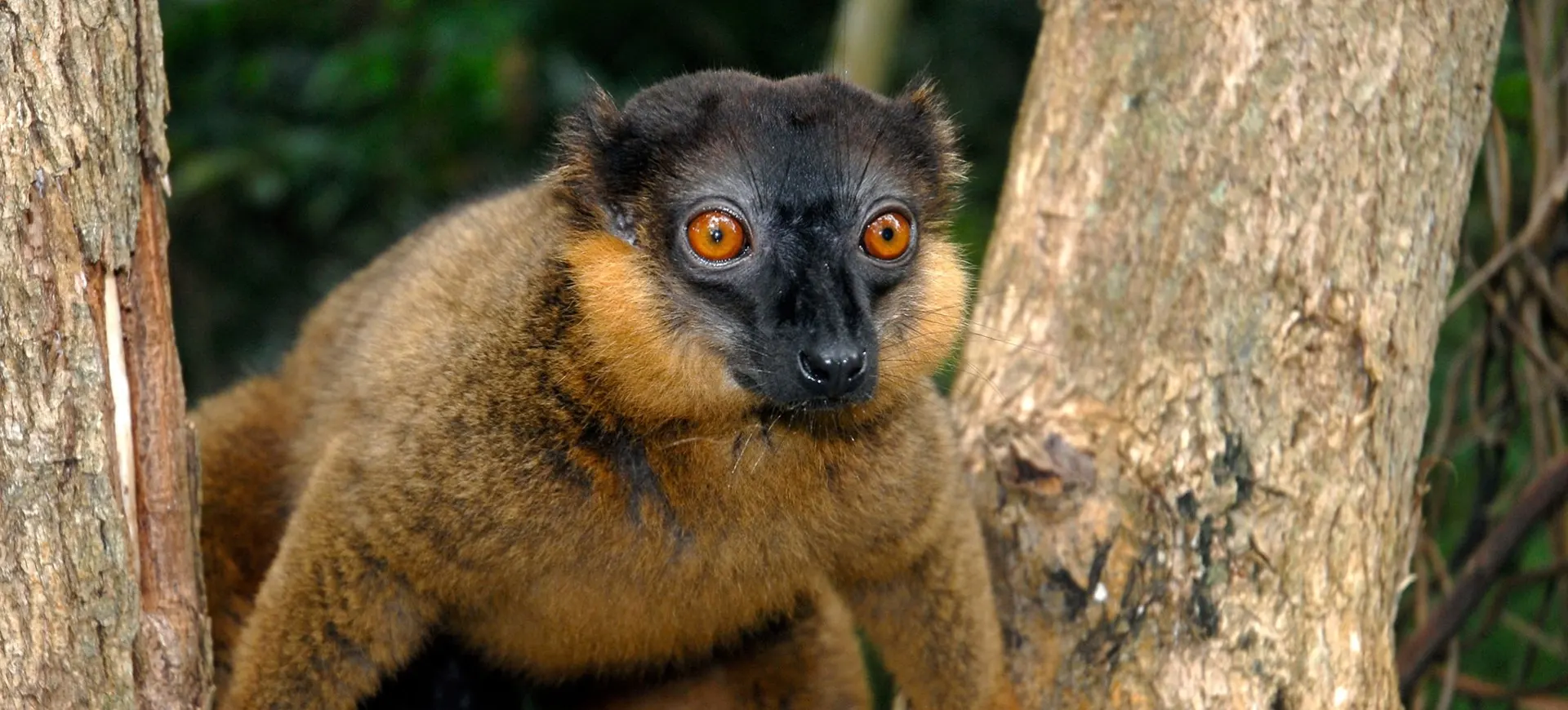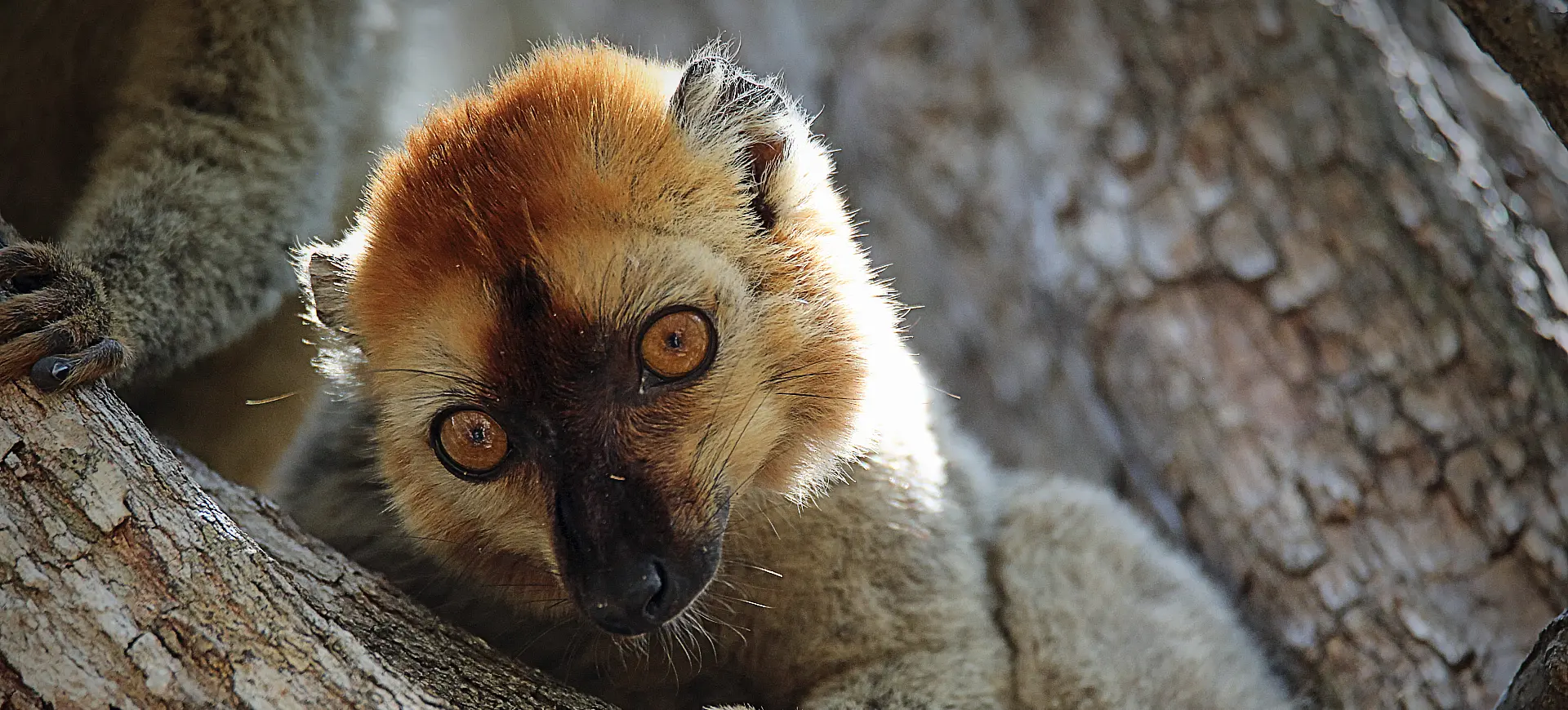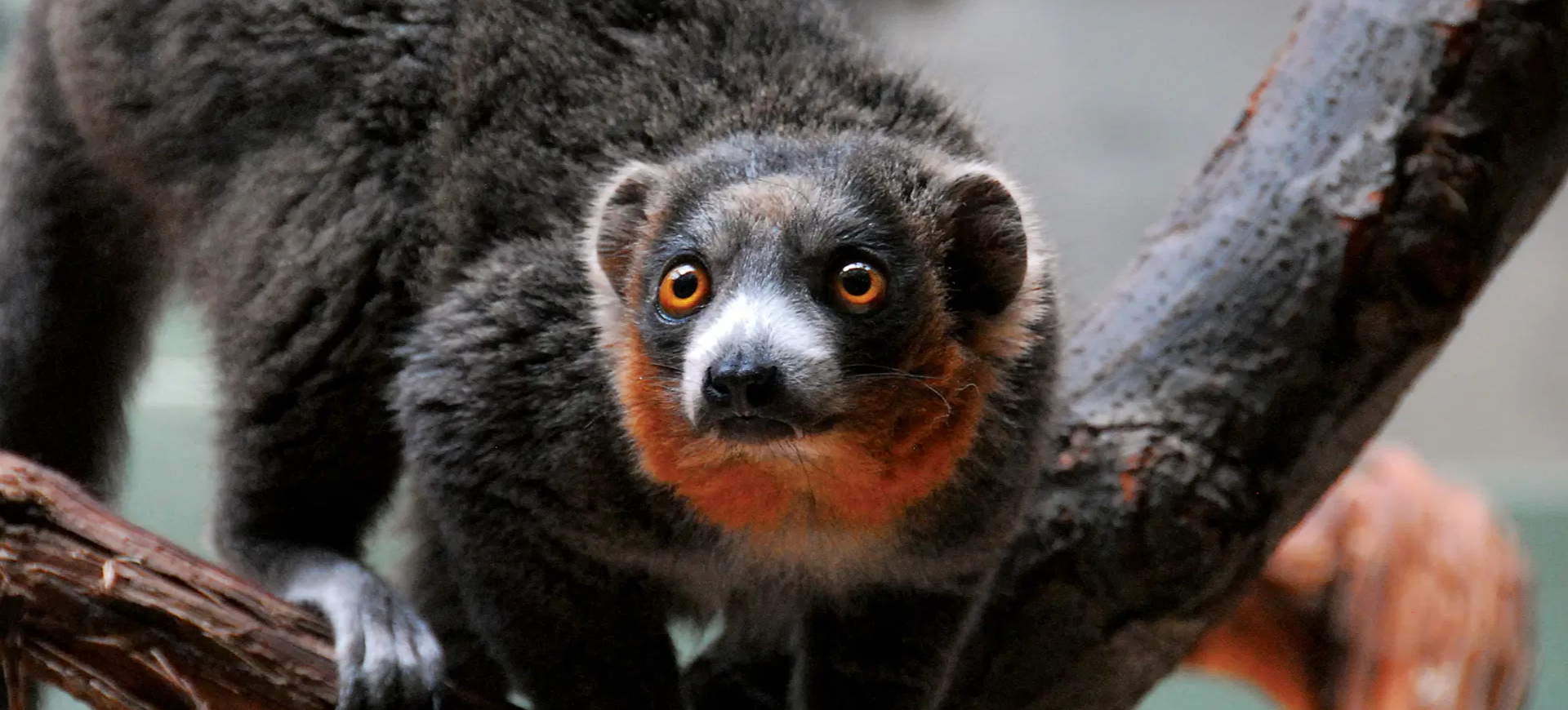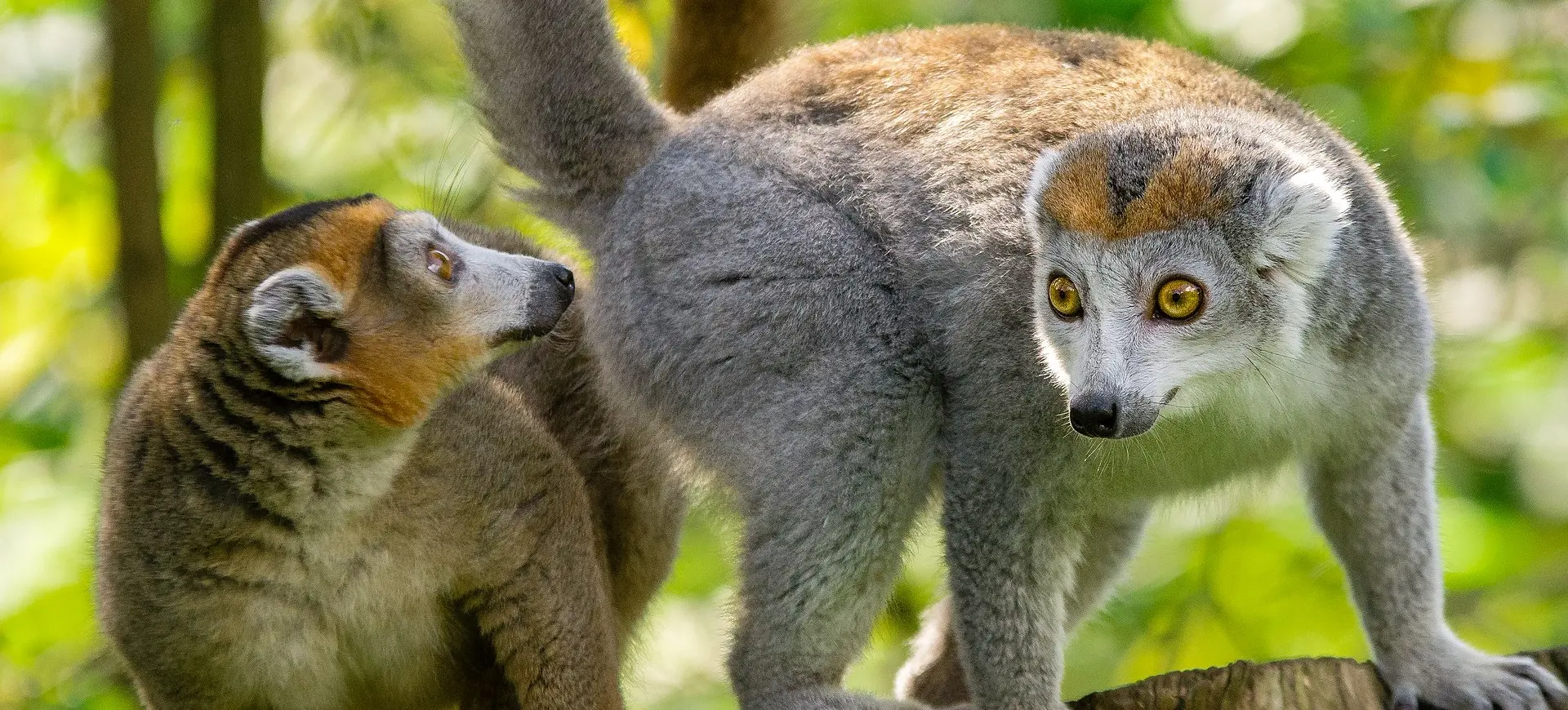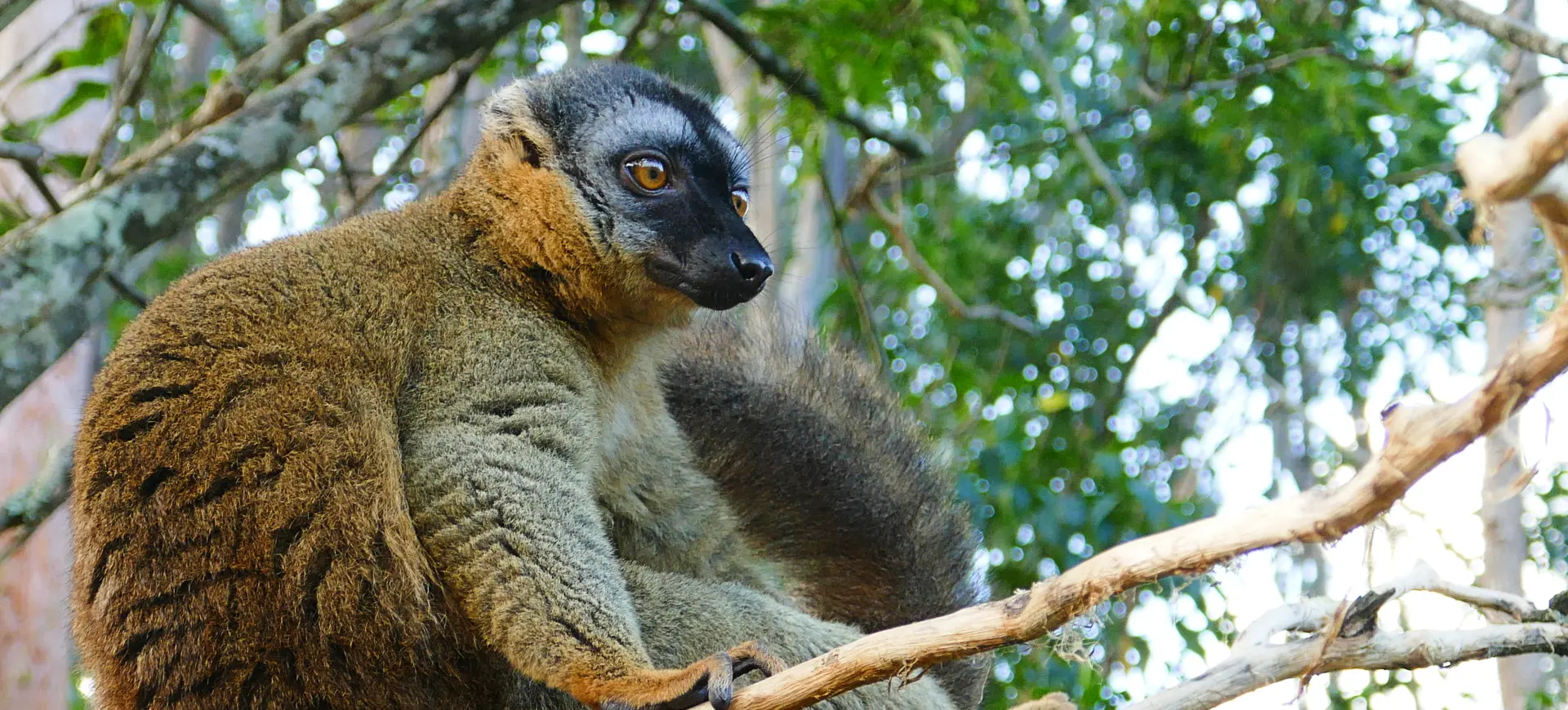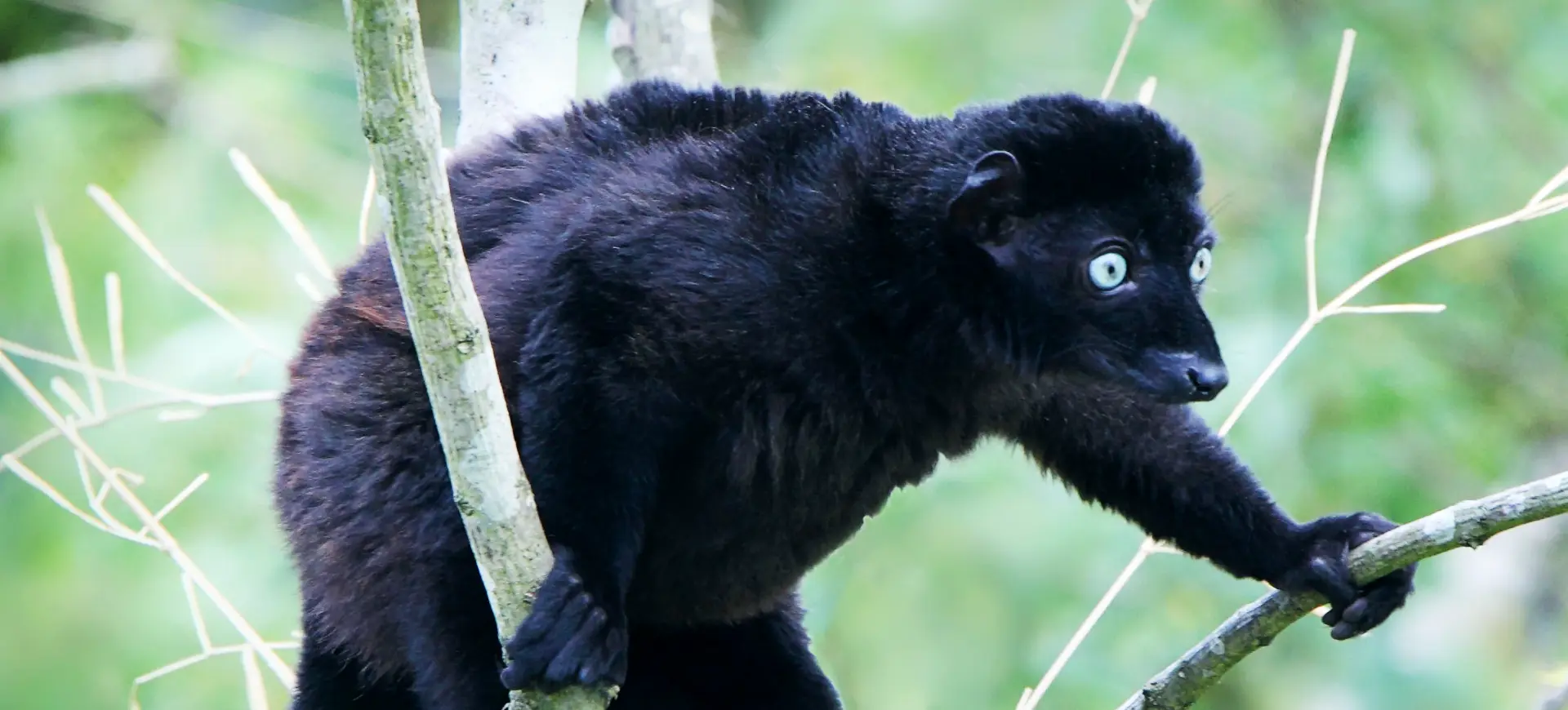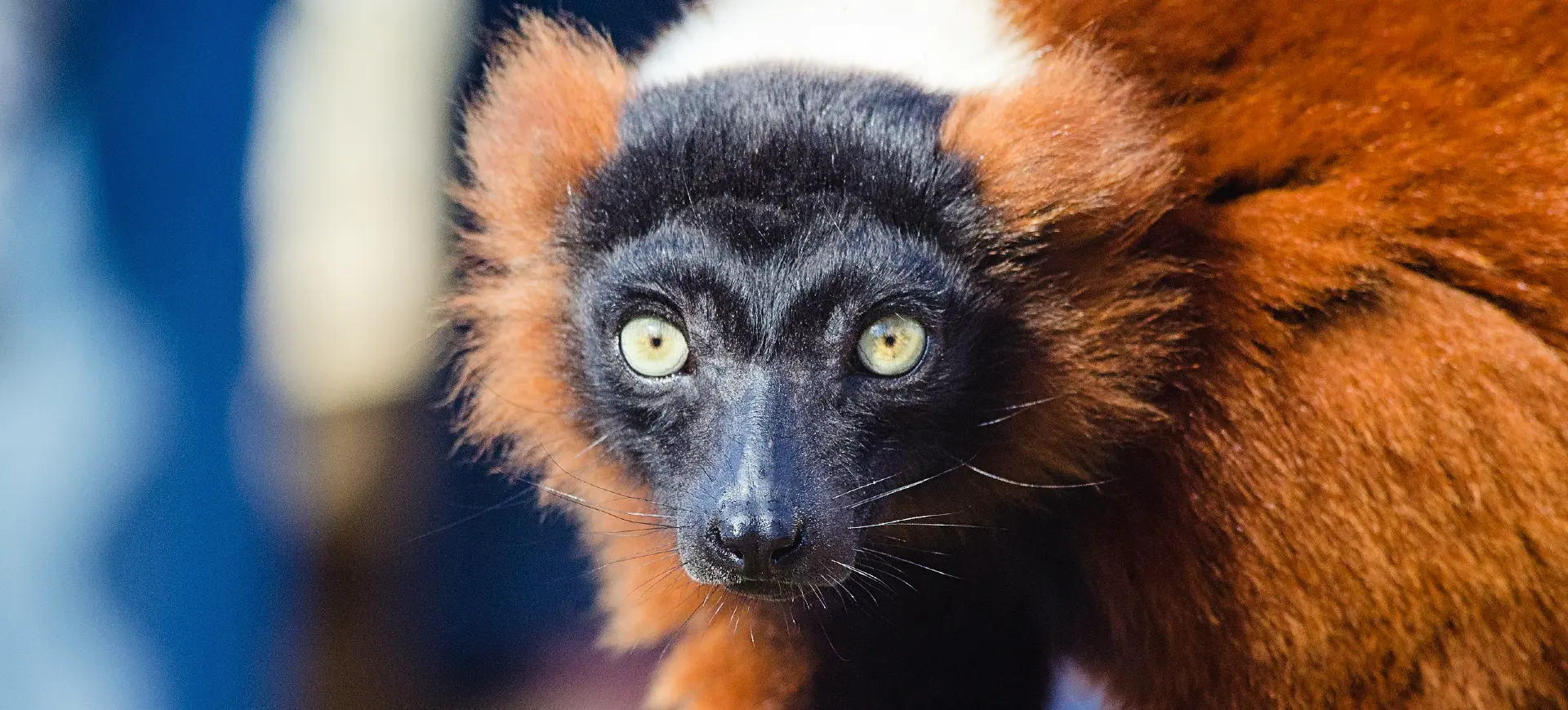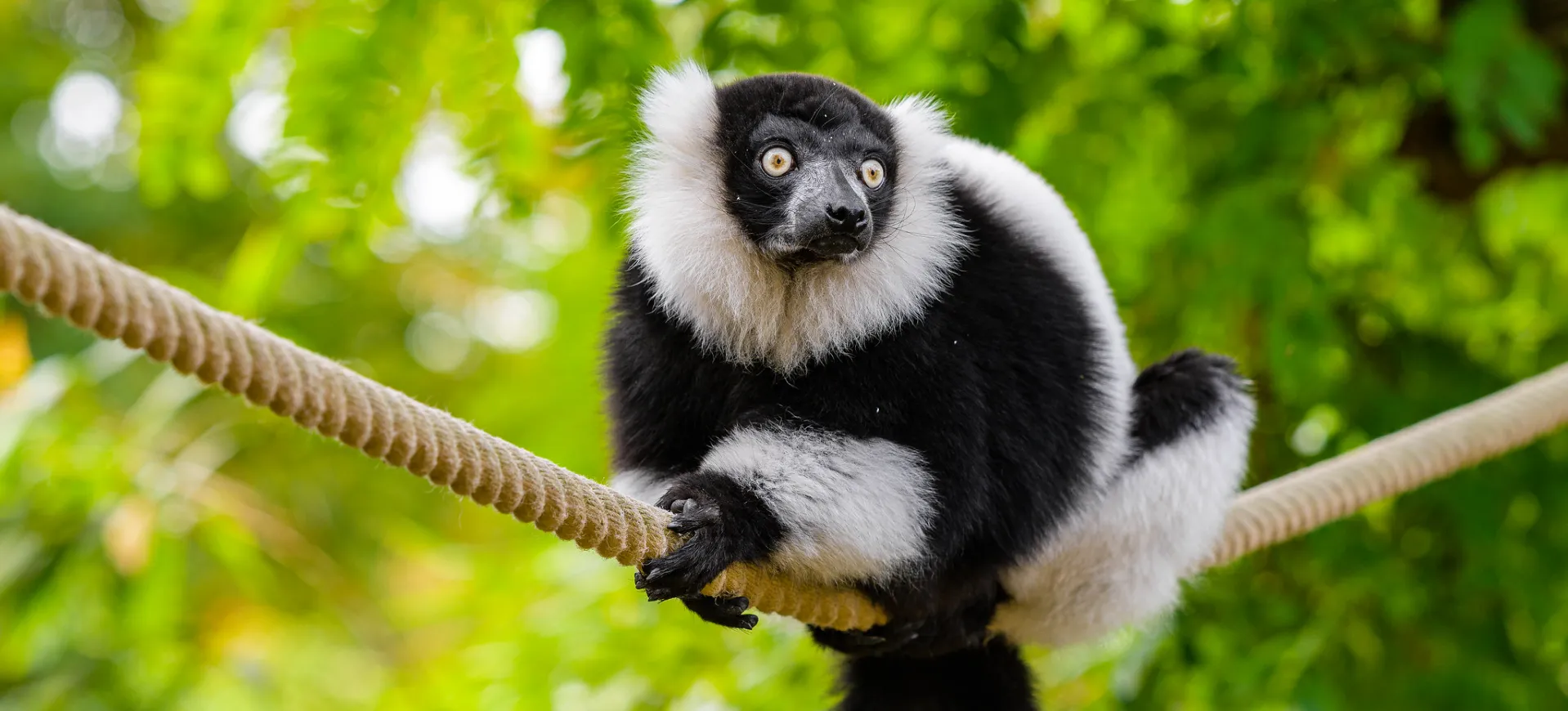Overview
The Ring-tailed Lemur (Lemur catta) is a distinctive primate endemic to Madagascar. It is renowned for its striking black and white ringed tail, which is longer than its body. This highly adaptable species inhabits various environments, from dry forests to scrublands in the southern parts of the island. Ring-tailed Lemurs are diurnal, spending a significant portion of their day foraging for fruits, leaves, flowers, and occasionally insects. Their social structure is matriarchal, with females dominating the groups in feeding and social interactions.
Ring-tailed Lemur are known for their terrestrial habits, being the most ground-dwelling of all lemur species, though they also spend a lot of time in trees. They are excellent climbers and use their tails for balance and communication within their troops. These lemurs have complex vocalizations and scent-marking behaviors for social bonding and territory defense. Conservation efforts are critical for this species as they face threats from habitat destruction, hunting, and the pet trade.
Despite these challenges, Ring-tailed Lemurs exhibit remarkable adaptability to changing environments, which has been key to their survival. They can live in harsh climates and manage to find food and water even in the dry season. Their ability to exploit a wide range of habitats has been a focus of scientific research, providing insights into primate evolution and adaptation. However, ongoing conservation efforts are essential to ensure their survival amid increasing environmental pressures.
Physical Description:
The Ring-tailed Lemur is most famous for its long, bushy tail adorned with 13 to 15 alternating black and white rings, which stand out against its grey-brown body fur. Adults typically measure about 17.7 inches (45 cm) in body length, with their tails adding another 22 inches (55 cm) on average. Their body is built for arboreal and terrestrial movement, with strong hind limbs for leaping between trees and walking quadrupedally on the ground. Their facial features include large, expressive eyes surrounded by dark patches and a pointed snout, enhancing their keen senses of vision and smell.
Males and females are similar in size, but males can be distinguished by the scent glands on their wrists and chests, which they use for marking territory and social communication. They weigh between 5 and 7.5 pounds (2.2 to 3.4 kg), with minimal sexual dimorphism in size. The hands and feet of Ring-tailed Lemurs are nimble, allowing them to grasp objects and food with precision. Their physical adaptations, including their distinctive tail, play crucial roles in their behavior and social interactions.

Lifespan: Wild: ~18 years || Captivity: ~30 years

Weight: Male & Female: 5-7.5 lbs (2.2-3.4 kg)

Length: Male & Female: Body 17.7 inches (45 cm) || Tail 22 inches (50 cm)
Characteristic:
Native Habitat:
Ring-tailed Lemurs are native to the southern and southwestern regions of Madagascar, where they inhabit a variety of forest types, including spiny forests, gallery forests, and scrublands. These environments are characterized by a harsh, dry climate for much of the year, with a short rainy season that provides a burst of food resources. Their diverse habitats reflect their adaptability and generalist nature, allowing them to thrive in both dry and wet conditions.
Their preference for diverse habitats has implications for conservation, as these regions are threatened by deforestation, agriculture, and urban development. Protecting the natural habitats of Ring-tailed Lemurs is essential for their survival, requiring efforts to preserve large, connected areas of forest that can support viable populations. Conservation strategies must consider the ecological requirements of this species, including their need for diverse feeding and breeding sites.
Climate Zones:
Biomes:
Biogeographical Realms:
Continents:
Countries:
Diet:
Diet & Feeding Habits:
Ring-tailed Lemurs have an omnivorous diet, primarily feeding on fruits comprising more than half of their diet. Leaves, flowers, and herbs supplement this, as do insects and small vertebrates occasionally. This varied diet helps them adapt to the seasonal availability of food resources in their environment. They are important seed dispersers in their habitats, contributing to the regeneration and health of their ecosystems. During the dry season, they may consume dirt and clay to supplement their diet with minerals and detoxify their systems.
Foraging occurs in the trees and the ground, with lemurs often descending to the forest floor for food. They have been observed using their hands to manipulate food items and even tools to access difficult-to-reach resources, such as sticks to extract insects from crevices. Social foraging is common, with troops moving together in search of food, though competition for resources can occur within groups. Their adaptability in feeding habits is a key factor in their survival in diverse and changing environments.
Mating Behavior:
Mating Description:
Ring-tailed Lemurs have a polygynandrous mating system, where males and females may have multiple mating partners during the breeding season. Mating occurs yearly, typically at the start of the rainy season, when food resources become more abundant. Females are only receptive for one day, leading to intense competition among males for mating opportunities. Males engage in “stink fights” by marking their tails with secretions from scent glands and wafting them at rivals to establish dominance and mating rights.
Gestation lasts for approximately 135 days, resulting in the birth of one to three offspring. Infants are born with their eyes open and are fully furred, clinging to their mother’s belly immediately after birth. Mothers are the primary caregivers, although other females in the group may assist with infant care, a behavior known as alloparenting. This cooperative care helps improve the survival chances of the young, highlighting the importance of social bonds within Ring-tailed Lemur troops.
Reproduction Season:
Birth Type:
Pregnancy Duration:
Female Name:
Male Name:
Baby Name:
Social Structure Description:
Ring-tailed Lemurs live in groups known as troops, typically consisting of 6 to 30 individuals, including multiple males and females. These groups are matriarchal, with a clear female dominance hierarchy that influences access to food and social interactions. Males have their hierarchy, which can change with the mating season and affect their access to mates. General social interactions within troops involve grooming, vocalizations, scent marking, strengthening social bonds, and maintaining group cohesion.
Territorial behavior is common, with troops defending their home ranges through vocal displays and scent marking. These social and territorial behaviors are crucial for the survival and reproduction of Ring-tailed Lemurs, affecting their access to resources and mating opportunities. Understanding the social structure of Ring-tailed Lemurs is essential for conservation efforts, particularly in designing protected areas and reintroducing programs that support their natural social dynamics.
Groups:
Conservation Status:
Population Trend:
The wild population of Ring-tailed Lemurs has seen a significant decline in recent years, primarily due to habitat loss, hunting, and capture for the illegal pet trade. These pressures have led to fragmented populations at risk of further decline without intervention. Conservationists are actively working to monitor these populations, employing strategies such as habitat restoration, anti-poaching patrols, and community-based conservation programs to mitigate threats.
Captive populations of Ring-tailed Lemurs play a role in conservation through breeding programs to maintain genetic diversity and educational programs that raise awareness about the species and its plight. These efforts complement wild conservation initiatives to eventually strengthen wild populations through habitat protection and restoration. The survival of Ring-tailed Lemurs in the wild depends on the effectiveness of these conservation strategies and the commitment of the international community to support Madagascar’s conservation efforts.
Population Threats:
The primary threats to Ring-tailed Lemurs include habitat destruction due to slash-and-burn agriculture, logging, and mining. These activities reduce the availability of critical habitat for feeding, breeding, and socializing, leading to population declines. Hunting for bushmeat and capture for the illegal pet trade also pose significant risks, directly reducing population numbers and disrupting social structures. Climate change exacerbates these threats by altering habitat conditions and affecting the availability of food and water resources.
Conservation efforts address these threats through habitat protection and restoration, law enforcement to prevent hunting and capture, and community engagement to promote sustainable practices. These initiatives are crucial for mitigating the impacts of human activities on Ring-tailed Lemurs and ensuring their survival in the face of ongoing environmental challenges.
Conservation Efforts:
Conservation efforts for Ring-tailed Lemurs involve a combination of habitat protection, research, and community-based initiatives. Protected areas play a key role in conserving critical habitats, but effective management and enforcement are essential to prevent illegal activities within these areas. Research on Ring-tailed Lemur ecology and behavior informs conservation strategies, helping to identify priority areas for protection and restoration.
Community-based conservation programs engage local communities in protecting lemurs and their habitat, promoting alternative livelihoods that reduce reliance on forest resources. Environmental education programs raise awareness about the importance of lemurs and the need for local and global conservation. These comprehensive conservation strategies aim to address the multifaceted threats facing Ring-tailed Lemurs, working towards their recovery and long-term survival.
Additional Resources:
Fun Facts
- Ring-tailed Lemur is the most terrestrial lemur species, spending significant time on the ground.
- Their iconic tail is used for communication, including group cohesion during travel and territorial displays.
- They can sunbathe, often seen sitting upright with their arms outstretched to absorb sunlight.
- Ring-tailed Lemurs have a “tooth comb,” a specialized dental structure for grooming fur and social bonding.
- They are known for their “stink fights,” where males use scent glands to assert dominance and compete for mates.
- This species can leap up to 10 feet (3 meters) between trees or on the ground.
- Ring-tailed Lemurs have a complex repertoire of vocalizations used for communication within their troop.
- They are one of the most recognizable and widely studied lemur species, representing Madagascar’s unique wildlife.
- Conservation efforts for Ring-tailed lemurs aim to protect the species and the biodiversity of Madagascar’s ecosystems.
- Despite their adaptability, Ring-tailed Lemurs rely on intact habitats to provide the diverse resources needed for survival.






